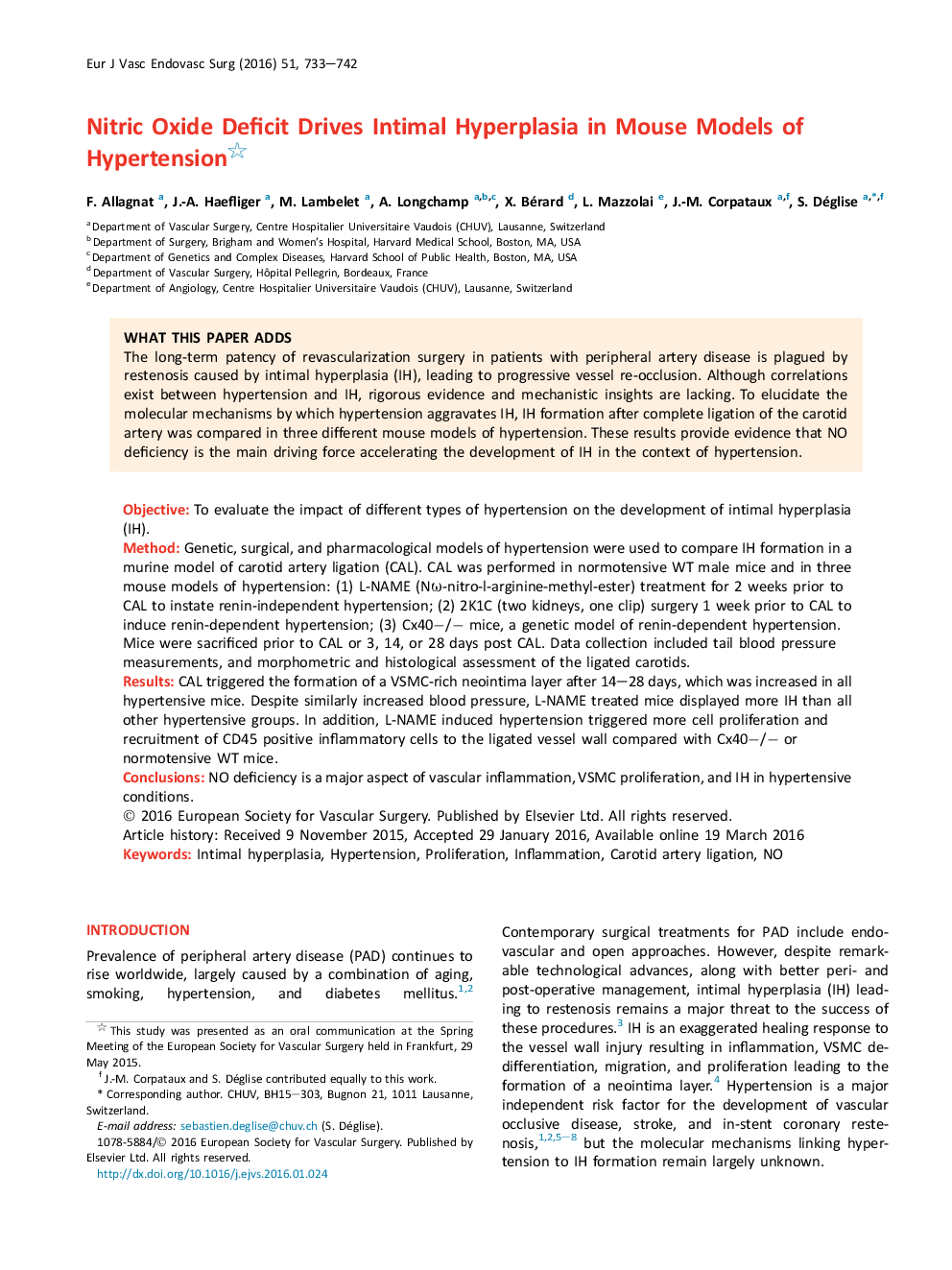| Article ID | Journal | Published Year | Pages | File Type |
|---|---|---|---|---|
| 2911768 | European Journal of Vascular and Endovascular Surgery | 2016 | 10 Pages |
ObjectiveTo evaluate the impact of different types of hypertension on the development of intimal hyperplasia (IH).MethodGenetic, surgical, and pharmacological models of hypertension were used to compare IH formation in a murine model of carotid artery ligation (CAL). CAL was performed in normotensive WT male mice and in three mouse models of hypertension: (1) L-NAME (Nω-nitro-l-arginine-methyl-ester) treatment for 2 weeks prior to CAL to instate renin-independent hypertension; (2) 2K1C (two kidneys, one clip) surgery 1 week prior to CAL to induce renin-dependent hypertension; (3) Cx40−/− mice, a genetic model of renin-dependent hypertension. Mice were sacrificed prior to CAL or 3, 14, or 28 days post CAL. Data collection included tail blood pressure measurements, and morphometric and histological assessment of the ligated carotids.ResultsCAL triggered the formation of a VSMC-rich neointima layer after 14–28 days, which was increased in all hypertensive mice. Despite similarly increased blood pressure, L-NAME treated mice displayed more IH than all other hypertensive groups. In addition, L-NAME induced hypertension triggered more cell proliferation and recruitment of CD45 positive inflammatory cells to the ligated vessel wall compared with Cx40−/− or normotensive WT mice.ConclusionsNO deficiency is a major aspect of vascular inflammation, VSMC proliferation, and IH in hypertensive conditions.
